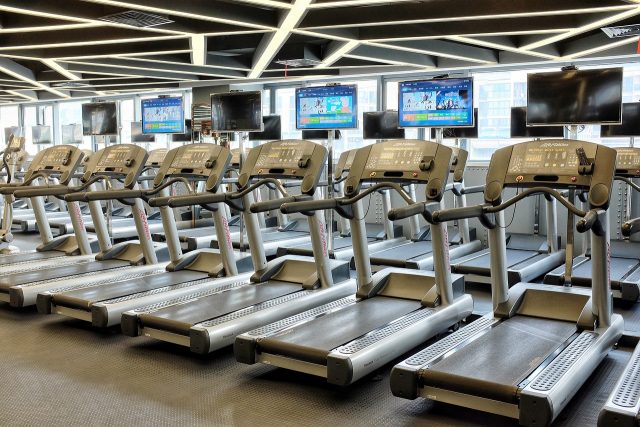The five kilometer distance (5k, about 3.1 miles) is the first competitive many people try. Everyone, from the beginner just entering the world of road racing all the way to the experienced runner loves a 5k. They are a fun, easy distance that appeals to sprinters, joggers and walkers alike. They represent a low commitment offset by a high reward. You don’t need to spend upwards of 20 weeks training specifically for it, unlike a marathon, and recovery time is super quick– often days.
Someone who has never run before can be at the starting line of their very first 5K after only a few months training. Those with a good base of physical fitness can do so in weeks. It will take some effort, but not a huge commitment. This is definitely the reason it is the most popular racing distance in the US.
My training programs, outlined below, are a hybrid of several that I have utilized myself over the years. Heavily influenced by Hal Higdon, the guru of the marathon distance, and Jeff Galloway, running coach extraordinaire, plus peppered with my own experience. You will find easy beginner programs to take you to your first 5k in 8 weeks. There is also an intermediate and advanced plan for those with experience that want to improve their time. Don’t wait! Let’s get started now.
General tips and tricks when training for a 5k
- Don’t postpone your walking breaks.
By alternating running and walking for the prescribed amount of time, you speed up recovery and help your endurance. Make sure to do the first running interval slow enough that you can keep up a conversation. This can be frustrating when you feel energized and want to go fast, but if you do that, you will burn out all your energy. Pace yourself so you feel strong until the end.
- Do not run two days in a row, especially if you are a beginner.
Every other day you can cross-train or walk. Elliptical machines, cycling, swimming and strength workouts, or whatever you find fun and interesting (such as hiking or team sports) will improve your general fitness and keep the repetitive pounding from harming your knees.
- Don’t give in to the myths!
You do not need to “carb load” for a 5k and you do not need to take an energy bar with you during your run if it lasts less than 1hour. Many runners can go for several hours without needing nutrition, and for many, like me, eating mid-run can make you nauseated and ruin your workout. I recommend eating something small 30 minutes to one hour prior to your run but you don’t need to if you don’t want to.

Beginners 5K Training 8 Week Plan
Walk:Don’t worry about speed or distance yet. If you are using a treadmill, increase the incline to 1.5-2% to best simulate walking outdoors and to take some pressure off your knees. If you want to make it a bit harder, increase your incline.
 Run:
Run:Don’t worry about your pace; just run for the prescribed length of time and focus on your form and breathing. Most of these days have run/walk intervals for a prescribed amount of time. For example, Monday Week 1 says “Run 1 minute, walk 5 minues x3”. This means you should run for one minute then slow down to a walk for 5 minutes, then repeat the cycle twice more for 3 times total. This is a 20 minute workout. On Sundays, when it just says “Run”, run as far as you can before you feel fatigued, then walk until you have recovered and go again for the prescribed distance
Rest:Rest is just as important as training. You need the time for your muscles to recover to maximize performance on your next running day. You build the most strength when you rest–so don’t skip these days. Rest no less than 2 days a week, but, you can take a 3rd if you are very tired. I have pre-planned Saturdays to be a sort of “active rest” to allow you to be active but still recover from running. If you are very sore, take more rest. Sunday will be your hardest day, so choose your two rest days and your cross training day depending on how you feel
Practice Race:On this day, you should do your best to mimic the race conditions. Don’t be too hard on yourself. Run until you are fatigued, walk until you are recovered, for the full 5km distance and write down how you did to compare to the actual race and see how your training is going.
How to Train for a 5K as a Beginner – 8 Week Plan
| Monday | Tuesday | Wednesday | Thursday | Friday | Saturday | Sunday | |
|---|---|---|---|---|---|---|---|
| Week1 |
| Rest or Crosstrain |
| Rest | Rest or Crosstrain | Run 1.5 mi | Walk 30 mins |
| Week2 |
| Rest or Crosstrain |
| Rest | Rest or Crosstrain | Run 1.75 mi | Walk 35 mins |
| Week3 |
| Rest or Crosstrain |
| Rest | Rest or Crosstrain | Run 2 mi | Walk 40 mins |
| Week4 |
| Rest |
| Run 10 min | Rest | Walk 45 mins | Practice Race |
| Week5 |
| Rest or Crosstrain |
| Rest | Rest or Crosstrain | Run 2.25 mi | Walk 50 mins |
| Week6 | Run 25 minutes | Rest or Crosstrain |
| Rest | Rest or Crosstrain | Run 2.5 mi | Walk 55 mins |
| Week7 | Run 25 minutes | Rest or Crosstrain | Run 28 minutes | Rest | Rest or Crosstrain | Run 3 mi | Walk 1 hr |
| Week8 | Run 30 minutes | Rest | Cross Train |
| Walk 1 hr | Rest | RACE DAY |
Intermediate-Advanced 5K Training
Once you have a few 5Ks under your belt, you can start to set your sights a big higher than just finishing. You’d probably like to set a Personal Record (also called a PR). This program is one step above the beginner program and will take you the extra distance to reaching your goal. Whether you want to run the whole distance or finish your 5K in less than 30 minutes, this is the ideal program for you.
The best approach to setting a PR is to improve your endurance and speed by running more miles and running faster. For the most benefit, it helps to have some understanding of tempo runs and speedwork, so you will probably need to have been running several days a week for up to a year and average 10-15 miles per week.
Run:as above, run at an easy pace during which you can hold a conversation–dont worry about your speed or distance covered, just focus on staying comfortable for the prescribed length of time
Speed:For your faster runs on the schedule, go slightly faster than you would on a normal “run” day. You should not be able to hold a conversation, but you are also not all-out sprinting
 Long Run:
Long Run:Once a week, go for a long run. I have these scheduled on Sundays, but you can move it to whatever day of the week you like. I suggest doing it on a day that you don’t have too many other commitments so you can take as much time as you like and enjoy yourself, as well as take the rest of the day to recover and stretch as needed. Run 5 to 7 miles at a comfortable pace, not worrying about speed. Don’t be afraid to take walking breaks or stop to get water. It will be hard, but should not be grueling.
Intervals:To improve speed, you sometimes need to train at a pace faster than your race pace for the 5-K, about the pace you would run in a 1500 meter or mile race. Run the prescribed number of meters hard, then recover by jogging or walking as long as you need to, then complete the prescribed number of intervals (for example 5x400m means run 400 meters hard, then recover, then repeat 4 more times for 5 total 400m sprints). Before starting this workout, warm-up by jogging a mile or two and doing a dynamic stretching routine. Cool down afterwards with a short jog.
Tempo Runs:This is a continuous run with an easy start, a buildup in the middle to near your ideal race pace, then slow back down to the finish. A typical tempo run would begin with 5-10 minutes easy running, continue with 10-15 faster running, and finish with 5-10 minutes cooling down. Listen to your body on this one and do not watch your pace on the treadmill
Cross training:This can be any activity you like- focus on enjoying yourself and building up a light sweat. Ideal complimentary exercises are body-weight or light-weight resistance training: push-ups, pull-ups, use of free weights and lower impact cardiovascular activities (eliptical training or cycling).
 Stretching:
Stretching:Never overlook stretching and recovery. This is an important part of any training program- particularly on days that you train hard. You should do a dynamic warmup before every run and static stretching afterwards
Intermediate 5K Training 8 Week Plan
| Monday | Tuesday | Wednesday | Thursday | Friday | Saturday | Sunday | |
|---|---|---|---|---|---|---|---|
| Week1 | Rest | Run 3 miles | Cross train | Run 35 minutes | Rest | Run 3 miles | intervals 8x200 m |
| Week2 | Rest | Run 3 miles | 30 mins tempo run | Cross train | Rest | Fast run 3 miles | Run 5 miles |
| Week3 | Rest | Run 3 miles | Cross train | Run 35 minutes | Rest | Run 4 miles | intervals 9x200 m |
| Week4 | Rest | Run 3 miles | 30 mins tempo run | Cross train | Rest | Rest | Practice race |
| Week5 | Rest | Run 3 miles | Cross train | Run 35 minutes | Rest | Fast run 4 miles | Run 5.5 miles |
| Week6 | Rest | Run 3 miles | 30 mins tempo run | Cross train | Rest | Run 5 miles | intervals 10x200 m |
| Week7 | Rest | Run 3 miles | Cross train | Run 35 minutes | Rest | Fast run 5 miles | Run 6 miles |
| Week8 | Rest | Run 3 miles | 30 mins tempo run | Cross train | Rest | Rest | RACE DAY |
Advanced 5K Training 8 Week Plan
| Monday | Tuesday | Wednesday | Thursday | Friday | Saturday | Sunday | |
|---|---|---|---|---|---|---|---|
| Week1 | Run 30 minutes | Crosstrain | Rest | 30 minutes tempo run | Rest or Crosstrain | fast run 4 miles | Run 5 miles |
| Week2 | Run 35 minutes | Crosstrain | Rest | 30 minutes tempo run | Rest or Crosstrain | fast run 4 miles | intervals 5x400 m |
| Week3 | Run 45 minutes | Crosstrain | Rest | 35 minutes tempo run | Rest or Crosstrain | fast run 5 miles | Run 6 miles |
| Week4 | Run 55 minutes | Rest | 40 minutes tempo run | Rest | Crosstrain | Rest | Practice Race |
| Week5 | Run 40 minutes | Crosstrain | Rest | 40 minutes tempo run | Rest or Crosstrain | fast run 5 miles | intervals 7x400 m |
| Week6 | Run 60 minutes | Crosstrain | Rest | 45 minutes tempo run | Rest or Crosstrain | fast run 6 miles | Run 7 miles |
| Week7 | Run 80 minutes | Crosstrain | Rest | 50 minutes tempo run | Rest or Crosstrain | fast run 6 miles | intervals 9x400 m |
| Week8 | Run 90 minutes | Rest | 30 minutes tempo run | Rest | Crosstrain | rest | RACE DAY |
The schedules provided are only a guide. If you work weekends and prefer to do long runs in the middle of the week, simply flip-flop the workouts for those two days. If you have an important appointment on a day when you have a hard workout planned, do a similar switch with a rest day. Feel free to make minor modifications to suit your personal schedule. What you do over the full training period is more important than any single workout.
Also note, that on the weeks you race (or mock race), the training load will be slightly lower. This is known as “tapering” and is meant to conserve your energy for the big race. Do not try to push harder even if you feel you have more in the tank. This will help with race performance.





